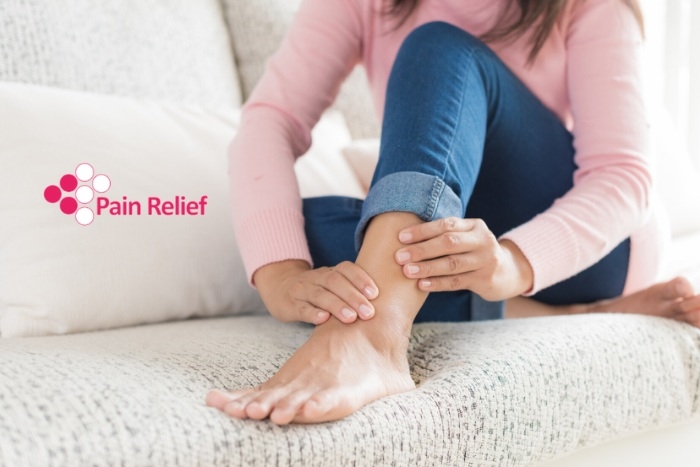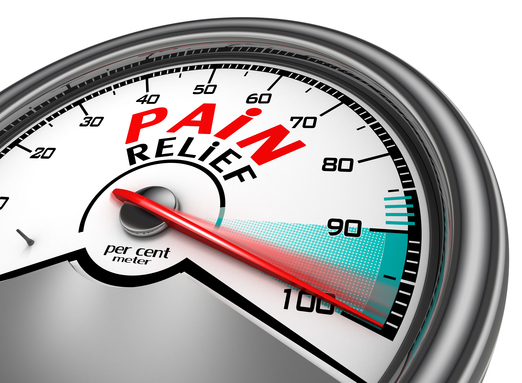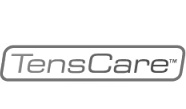You have no items in your shopping cart.
Ischialgia: What It Is And How to Treat It

Do you have a sharp pain that radiates from you lower back to the backs of your thighs? If yes, then you may have ischialgia. Ischialgia is often misdiagnosed as lower back pain, and while back pain is often a symptom, there is a lot more to this condition than you think. Keep reading to learn about ischialgia and how to treat it.
The Handy Cure/HandyRx laser therapy device is an effective method for treating ischialgia pain both at home and on the go. Small enough to fit in your suitcase, purse or backpack, but powerful enough to effectively treat pain in as little as four weeks. The Handy Cure/HandyRx laser device is designed to relieve a wide range of pain-related conditions, including ischialgia. Order yours today for fast shipping worldwide.
What is Ischialgia?
Ischialgia is an obsolete term for sciatica, which is a type of pain felt in tissues reinforced by the sciatic nerve and its roots. In simpler terms, ischialgia is a pinched sciatic nerve. This pain starts in the lower back or the small pelvis and moves down to the buttocks and legs. Since the pain generally starts in the lower back, it is commonly misdiagnosed as back pain. However, sciatica can be present even without the commonly felt back pain. When you have ischialgia or sciatica, you will feel a painful burning sensation, numbness, or tingling radiating from your lower back and from your buttock down the back of your thigh. When the pinched nerve is severe, walking can be extremely painful and difficult.
Sciatic Nerve Pain
Sciatica is often characterized by one or more of the following symptoms:
-
Constant pain in only one side of the buttock or leg
-
Weakness, numbness, or difficulty moving the leg, foot, and/or toes
-
Leg pain that is often described as burning, tingling, or searing (versus a dull ache)
-
A sharp pain that may make it difficult to walk or stand up
-
Pain that radiates down the leg
-
Pain that is worse when sitting
How to Treat Ischialgia/Sciatica
Sciatica can only be diagnosed by a medical professional after a physical exam. There are maneuvers during the exam only professionals can do to check certain symptoms and rule out similar conditions. In some cases, additional tests such as X-rays, a CT scan, an MRI scan, or electromyogram are needed to find the exact causes of sciatica to effectively treat it.
Who can Treat Ischialgia/Sciatica?
There are several healthcare specialists who can effectively treat ischialgia/sciatica. Physicians trained to effectively treat sciatica include gynecologists, orthopedists, neurosurgeons, rheumatologists, and general/family medicine practitioners. Other medical experts who specialize in treating lower back pain, such as physical therapists, chiropractors, massage therapists, psychologists, and acupuncturists, can also effectively treat ischialgia/sciatica.
Treatments for Ischialgia/Sciatica
Other treatment methods for sciatica depend on its cause, which means that identifying the underlying cause must be done first. This requires the advice of a medical professional, who can determine the cause and recommend a treatment plan. Physical therapy and low-level laser therapy (LLLT) are both effective methods for treating ischialgia/sciatica, either on their own or when used simultaneously. The Handy Cure/HandyRx is an effective and affordable device that uses LLLT and helps relieve sciatic pain when used on a regular basis.
There are a few lower back stretching and conditioning exercises that can be done to help speed up recovery for sciatica or prevent it. Medicines prescribed by doctors can also be taken to treat sciatica. These include anti-inflammatories, pain relievers, muscle relaxants, and antidepressants. In more persistent and advanced cases of ischialgia/sciatica, such as when it is caused by nerve compression at the lower spine, surgery can also be a treatment option.
Home Remedies and Exercises for Ischialgia/Sciatica
There are ways to manage ischialgia/sciatica at home through pain treatments and relaxation. Rest is one of the best ways to relieve sciatic nerve pain at home, as it prevents further muscle strain. Administering both a heat and a cold ice pack on the area where the pain is felt is a good way to relieve muscle pain and reduce swelling. LLLT treatment can be done at home with a Handy Cure/HandyRx device that uses laser therapy to target areas of pain and swelling. Its use of different energy levels reduces both pain and swelling and decreases recovery time.
Exercising and stretching help to strengthen the muscles and relieve pain. Depending on the severity of the condition it is sometimes best to do these under the supervision of physiotherapists.There are also some over-the-counter pain medications such as acetaminophen (Tylenol), naproxen (Aleve), ibuprofen (Advil, Motrin), and aspirin, that can be used as a temporary fix for pain.


















































































































































 Default Store View
Default Store View  New Theme
New Theme